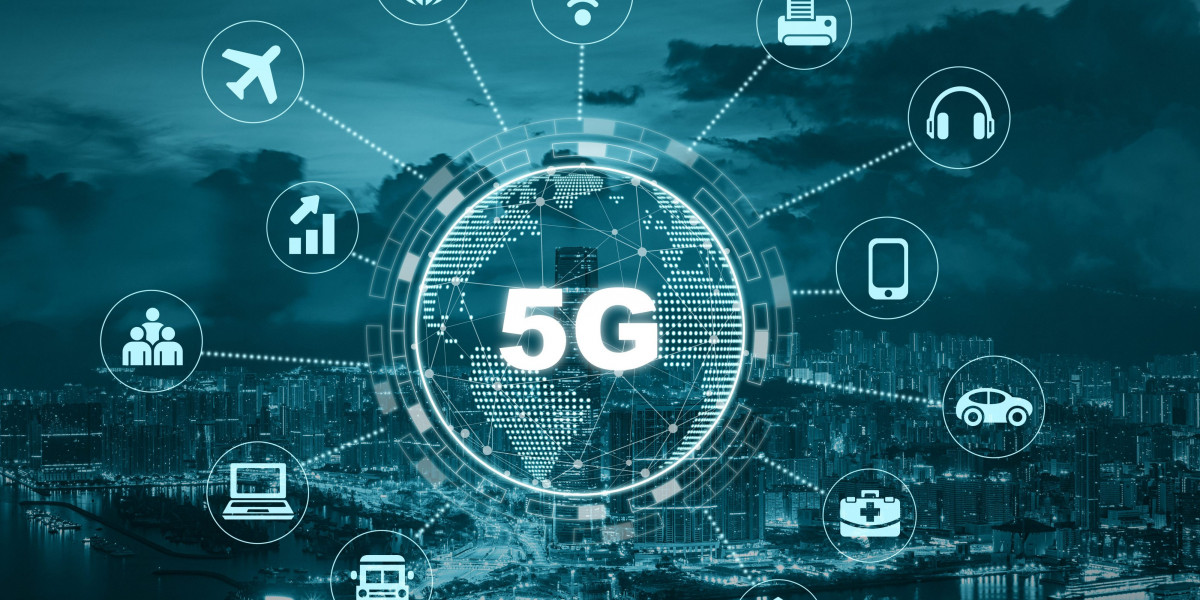The 5G technology market promises a transformative leap forward, offering enhanced speeds, low latency, and a broader range of applications, from autonomous vehicles to smart cities. However, despite the overwhelming potential of this cutting-edge technology, there are several key barriers that could delay or hinder its widespread adoption. These obstacles span across regulatory, financial, infrastructural, and technical challenges, all of which need to be addressed before 5G can fully deliver on its promises.
Infrastructure and Investment Challenges
The rollout of 5G technology requires a complete overhaul of existing telecom infrastructure. To deliver on 5Gs ultra-fast speeds and low latency, a dense network of small cells must be installed across urban and rural areas. This requires substantial investment in new hardware, fiber optics, and towers, as well as upgrades to existing mobile networks. However, many telecom companies are hesitant to make these investments due to high capital expenditures and uncertain returns on investment. In addition, securing real estate for new installations in densely populated cities can be a complex and time-consuming process, further delaying the infrastructure development required for 5G.
Regulatory and Spectrum Allocation Issues
The 5G network relies on high-frequency radio waves, known as millimeter waves, to provide the necessary bandwidth for fast and reliable connections. However, these frequencies are already in demand for other wireless services, and regulatory bodies must allocate them for 5G use. This process is often slow and cumbersome, with different countries adopting varying approaches to spectrum allocation. Additionally, some regions face a lack of uniformity in regulatory standards, which can create complications for global telecom operators trying to deploy 5G networks across borders. Until these regulatory hurdles are cleared, the global rollout of 5G will remain constrained.
Cost and Affordability Concerns
While 5G technology promises faster speeds and more reliable networks, the costs associated with upgrading and maintaining 5G infrastructure can be prohibitive. These costs are passed on to consumers through higher data prices or equipment costs, which may make 5G unaffordable for large segments of the population, especially in emerging markets. The need for specialized 5G-enabled devices, such as smartphones, will further drive up consumer expenses. Until there is a substantial reduction in the costs of 5G technology or broader market competition helps lower prices, affordability will remain a key barrier.
Security and Privacy Risks
As 5G networks enable greater connectivity and the proliferation of Internet of Things (IoT) devices, they also introduce new security and privacy risks. The increased volume of connected devices means a greater attack surface for hackers and cybercriminals. Additionally, the more distributed nature of 5G networks, with a combination of public and private ownership, creates vulnerabilities that may be difficult to secure. Governments and telecom operators must work together to establish robust cybersecurity protocols to prevent data breaches, attacks on critical infrastructure, and other security threats. Without addressing these concerns, 5G adoption may be slowed by public fear and distrust.
Environmental Impact and Sustainability Concerns
The environmental impact of deploying 5G technology is another barrier that cannot be overlooked. The construction of 5G infrastructure requires substantial energy, and the installation of thousands of small cells and new base stations contributes to the consumption of natural resources. While 5G technology itself offers some energy-efficient capabilities, the sheer scale of deployment needed to support global coverage raises questions about the long-term sustainability of the technology. Moreover, e-waste from old telecom equipment, like outdated 4G devices, could also become an environmental concern, as large quantities of obsolete technology are discarded. Addressing these sustainability issues is crucial for ensuring that 5G technology develops in a way that aligns with global environmental goals.
Conclusion
The 5G technology market holds vast potential, but several barriers must be overcome before it can become a mainstream reality. From regulatory challenges to high infrastructure costs, security concerns, and environmental impacts, addressing these obstacles will be key to unlocking the full capabilities of 5G. As telecom companies, governments, and other stakeholders collaborate to solve these issues, the pace of 5G adoption will likely accelerate, paving the way for a connected future.









